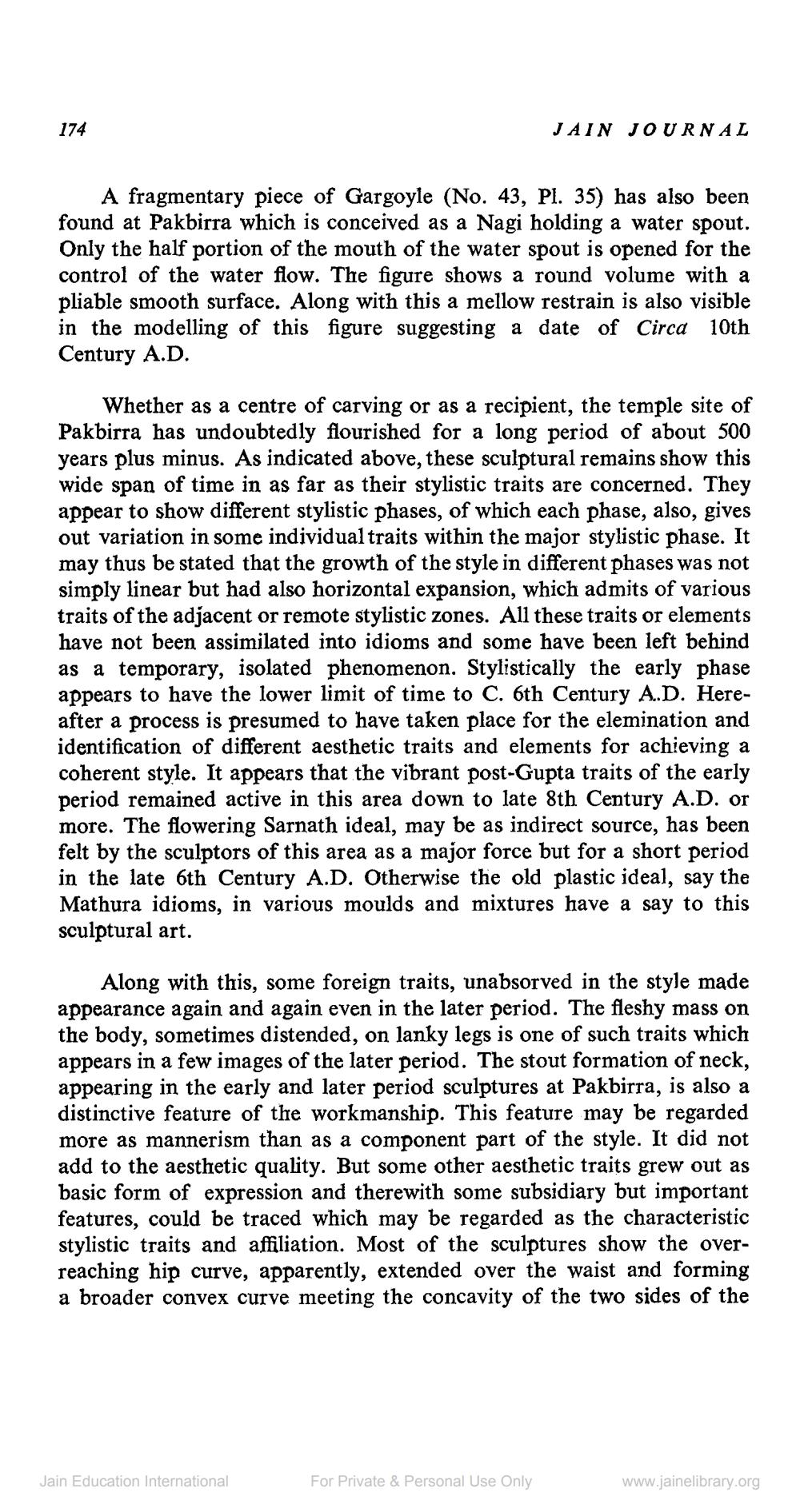________________
174
A fragmentary piece of Gargoyle (No. 43, Pl. 35) has also been found at Pakbirra which is conceived as a Nagi holding a water spout. Only the half portion of the mouth of the water spout is opened for the control of the water flow. The figure shows a round volume with a pliable smooth surface. Along with this a mellow restrain is also visible in the modelling of this figure suggesting a date of Circa 10th Century A.D.
JAIN JOURNAL
Whether as a centre of carving or as a recipient, the temple site of Pakbirra has undoubtedly flourished for a long period of about 500 years plus minus. As indicated above, these sculptural remains show this wide span of time in as far as their stylistic traits are concerned. They appear to show different stylistic phases, of which each phase, also, gives out variation in some individual traits within the major stylistic phase. It may thus be stated that the growth of the style in different phases was not simply linear but had also horizontal expansion, which admits of various traits of the adjacent or remote stylistic zones. All these traits or elements have not been assimilated into idioms and some have been left behind as a temporary, isolated phenomenon. Stylistically the early phase appears to have the lower limit of time to C. 6th Century A.D. Hereafter a process is presumed to have taken place for the elemination and identification of different aesthetic traits and elements for achieving a coherent style. It appears that the vibrant post-Gupta traits of the early period remained active in this area down to late 8th Century A.D. or more. The flowering Sarnath ideal, may be as indirect source, has been felt by the sculptors of this area as a major force but for a short period in the late 6th Century A.D. Otherwise the old plastic ideal, say the Mathura idioms, in various moulds and mixtures have a say to this sculptural art.
Along with this, some foreign traits, unabsorved in the style made appearance again and again even in the later period. The fleshy mass on the body, sometimes distended, on lanky legs is one of such traits which appears in a few images of the later period. The stout formation of neck, appearing in the early and later period sculptures at Pakbirra, is also a distinctive feature of the workmanship. This feature may be regarded more as mannerism than as a component part of the style. It did not add to the aesthetic quality. But some other aesthetic traits grew out as basic form of expression and therewith some subsidiary but important features, could be traced which may be regarded as the characteristic stylistic traits and affiliation. Most of the sculptures show the overreaching hip curve, apparently, extended over the waist and forming a broader convex curve meeting the concavity of the two sides of the
Jain Education International
For Private & Personal Use Only
www.jainelibrary.org




